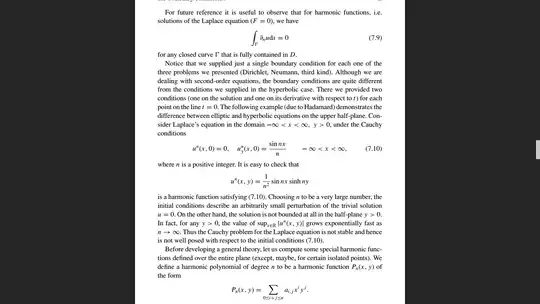I just came across the following on page 176 of "An Introduction to Partial Differential Equations" by Yehuda Pinchover and Jacob Rubinstein:
Here I can not understand the notation for the boundary conditions (7.10) and the harmonic function afterwards. Precisely, I do not understand the meaning of the variable $n$ on the left side of the equations (as an upper index). Also, in the second condition of (7.10), I do not understand the meaning of $y$ on the left side of the equation (as a bottom index).
I have a thought $n$ should mean $n$th-derivative and $y$ shows the variable in respect to which the differentiation is done. (based on other notations, I have seen) But I feel that here the meaning should be different.
It could be great if someone could spell the whole equations with words, so there is no ambiguity.
Tried to search for similar notation for this context throughout the book and in other places on the web, but with no success.
Thank you!

sum, and this cleared it all out. – victor175 Jul 11 '17 at 06:09